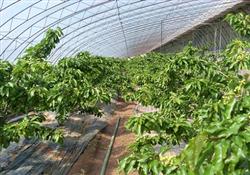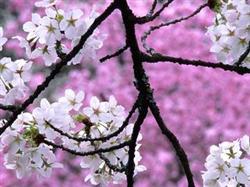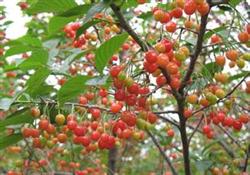Control of Diseases and insect pests of Sweet Cherry

The main diseases of sweet cherry are peach bacterial perforation disease and round spot disease. The disease is serious in July, August and September, which harms branches, leaves, shoots and fruits. If it is not controlled in time, the whole tree will lose its leaves. It has a very bad effect on flower bud formation, tree potential development and flowering and fruit setting in the second year. Therefore, we should pay attention to timely spraying control, spraying 5 Baomedo stone sulfur mixture before germination in spring to eradicate the spores of overwintering pathogen and control shell insects. 200 times Bordeaux solution was sprayed on leaves to control the above diseases after harvest in late June and late July. Sweet cherry branch and trunk glue is a physiological disease. After trunk injury and stimulation, the sap flows out, the branches of the big trees in the full fruit stage flow gum seriously from July to August after harvest, and the red-necked longicorn beetles do more harm when they are seriously harmed. Because the branches are frozen before pruning, and when the glue flow is serious, it is very harmful to the tree body. Therefore, it must be prevented and treated in time according to the cause of the disease. Avoiding injury and irritation of branches is the only way to prevent sweet cherry trees from gumming. The main pest of sweet cherry is red-necked longicorn beetle. The insect overwintered as larvae in the branches, and the peak period of adult Eclosion was from late June to mid-July, laying eggs in the cracks in the bark of the trunk, and the larvae ate from top to bottom in the xylem of the trunk and branches. The damage of this insect is serious, and it is difficult to control it. It causes glue flow after the trunk is eaten, which seriously weakens the tree potential and can lead to the death of the whole tree. Prevention and control methods 1. The adults were caught artificially during the adult emergence period from June to July. two。 In early June, apply trichlorfon yellow mud on tree trunks and branches to prevent spawning. 3. 200 times dichlorvos solution was injected into the wormhole to kill the larvae in the branches. 4. When insect droppings are found on the branches, the newly hatched larvae harmful under the skin should be dug up in time. 5. Adults have chemotaxis, which can be combined with the control of pear heart borer with sugar and vinegar solution.
- Prev

Four measures to promote blossom of sweet cherry
First, spray paclobutrazol. In order to ensure sufficient flower buds every year, 500-1000 mg / kg paclobutrazol should be sprayed on the canopy from mid-June to early July, once every 10-15 days, 1-3 times continuously, to inhibit vegetative growth (moderate trees 1-2 times, vigorous trees 2-3 times, crown branches.
- Next

Management measures of Cherry in greenhouse over Summer
First, there are some misunderstandings in the cultivation of cherry in Guanzhong and Tongchuan, Shaanxi Province, mainly as follows: 1. Deep application of base fertilizer. The root system of cherry is shallow, it is easy to hurt the root by applying basal fertilizer between rows or plants, and lead to a large number of Chinese cherry and ZY-1 rootstock seedlings.
Related
- Moge, come on! The staff of the peasant association in the producing area of cantaloupe were frightened when the crowd gathered.
- Causes and Solutions of low Fruit setting rate of Apple
- Symptoms and control measures of passion fruit virus disease
- Fruit growing lesson: how do apple orchards keep high yields?
- Can you build orchards in the mountains? What are the pros and cons?
- How to manage the coloring period of Crisson grape?
- This paper introduces the processing technology of two kinds of fig products.
- How much is a month for retired teachers in rural areas by 2020?
- How can strawberry planting increase sugar content? We should pay attention to management in many aspects.
- What are the cultivation techniques on how to improve the yield of golden fruit?

